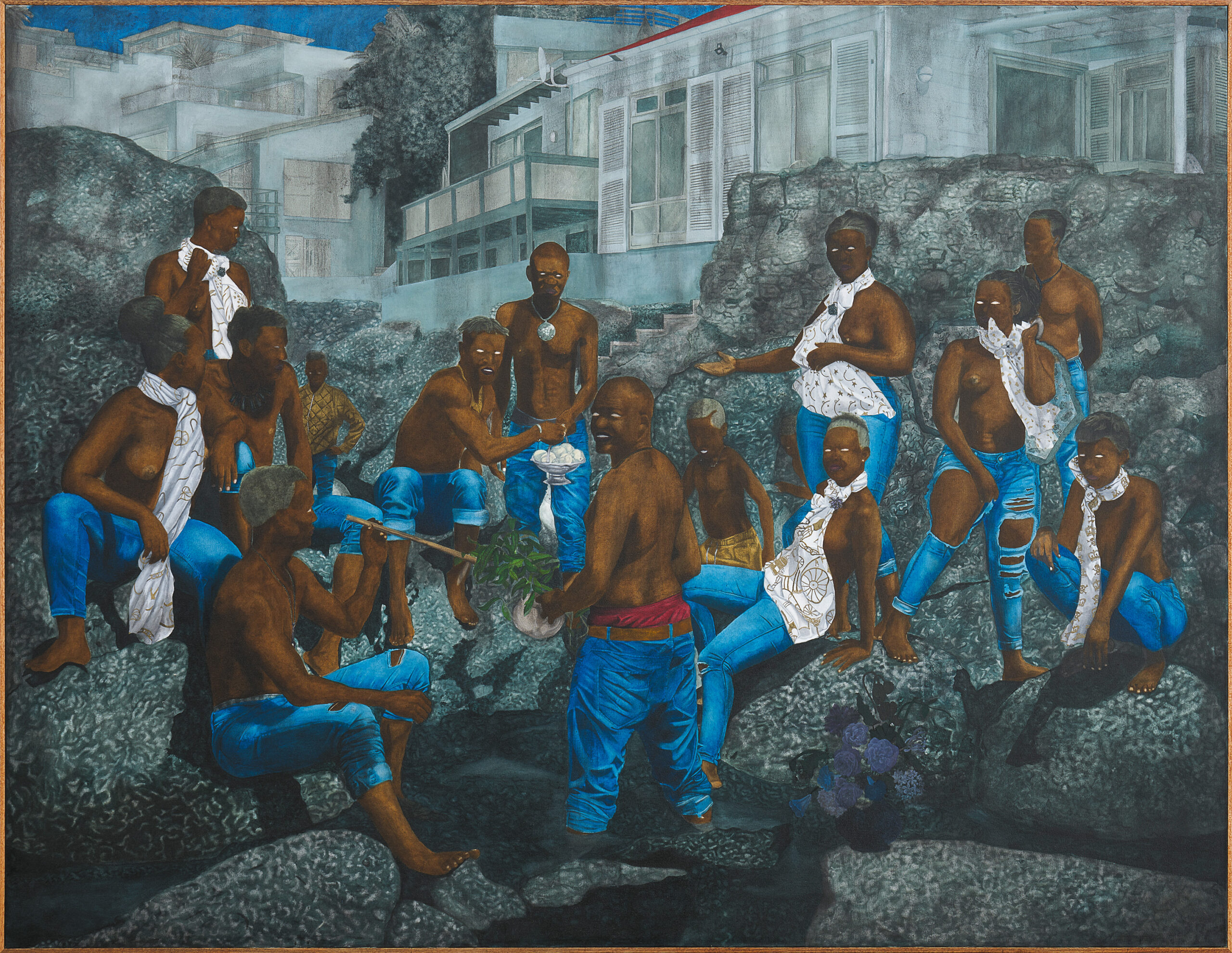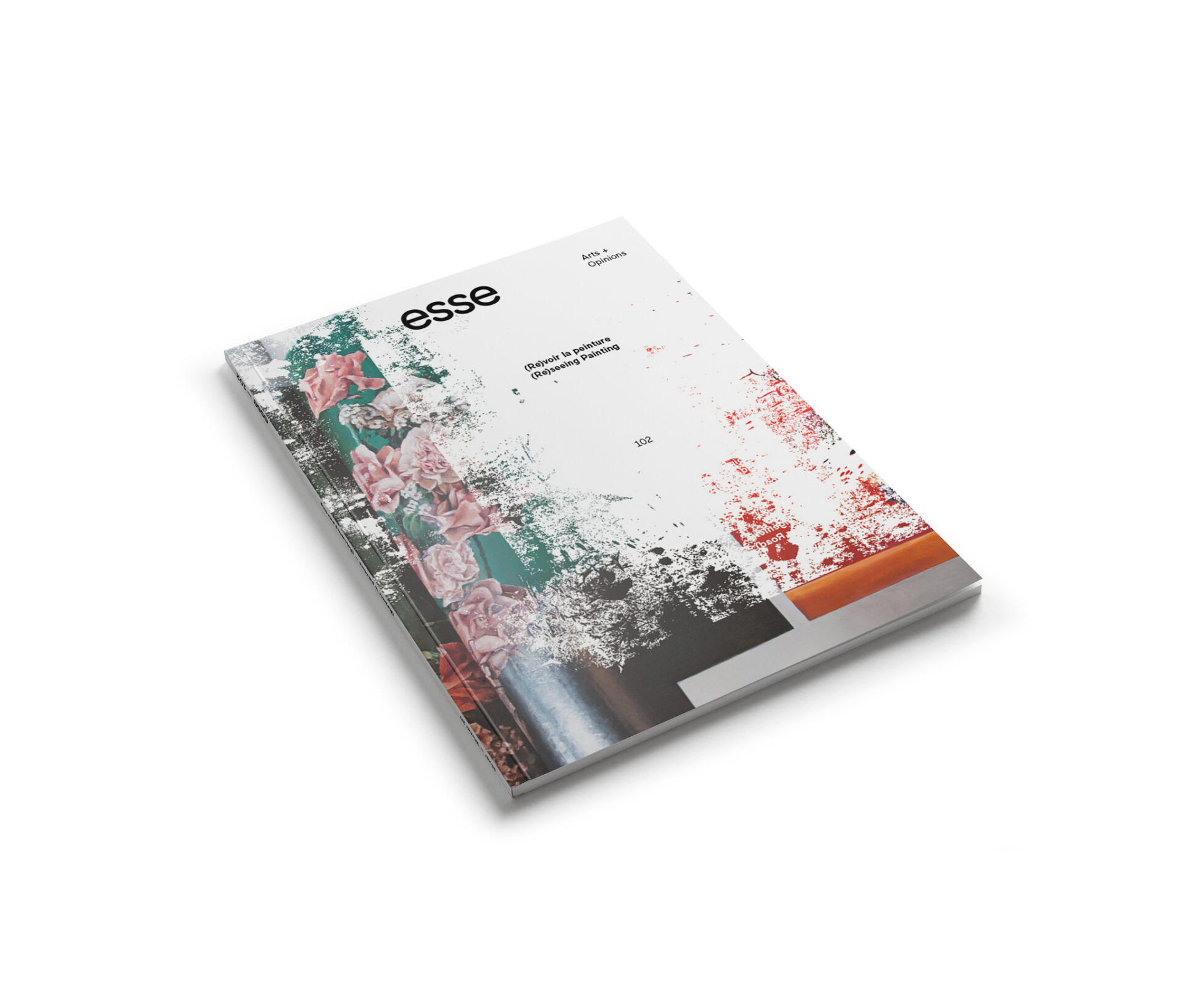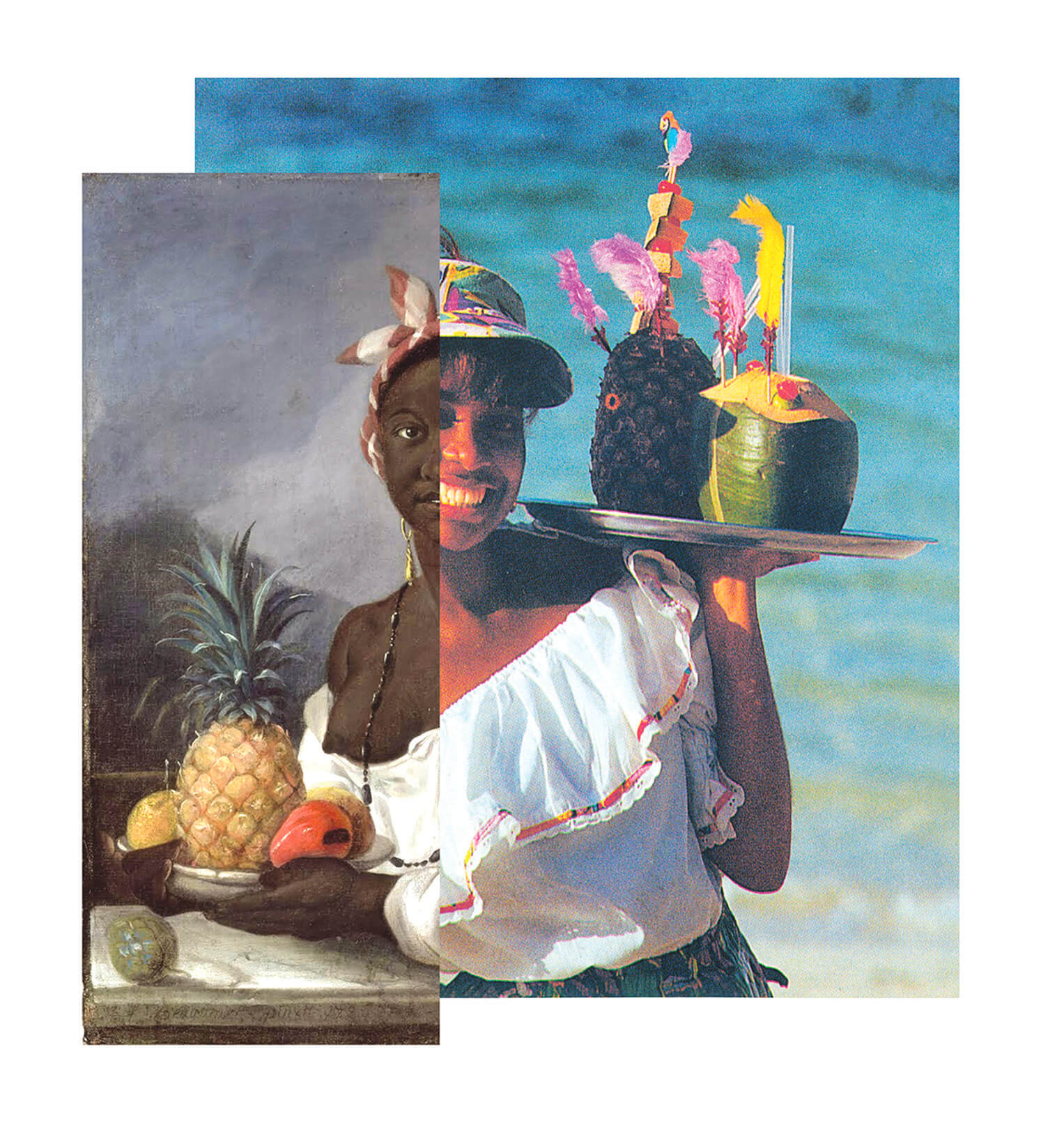
Cinga Samson’s muted pallet and flattened compositions are central to the African anti-sublime aesthetic that distinguishes his work from that of other contemporary painters. Forget the colonial stereotypes of deep blue skies, dusty deserts, and savannahs — through a subtle intertwining of popular culture and lush vegetation, Samson’s paintings radically defy Western expectations of what African life should be. Like thoroughly contemporary, pagan icons, his subjects proudly flaunt consumerist markers of Western capitalism: effigies of the now, ostentatious status symbols, and cheap consumer goods, visually anchor the paintings in the context of cosmopolitan streetwise culture.




